There are a couple ways to think about tanto knives. A traditional Japanese Tantō (短刀) is a short sword worn by the samurai of feudal Japan. These swords started out as functional weapons used in the Hein period (794-1185 B.C.). These were designed to primarily be stabbing weapons, but of course the razor fine edge could also slash cut as well.
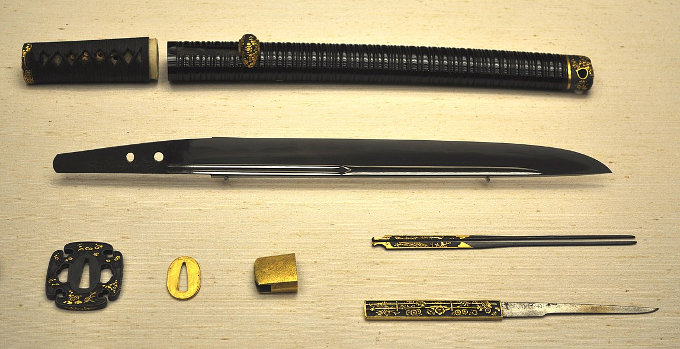 Ancient Japanese Tanto. Image source.
Ancient Japanese Tanto. Image source.
The tantō is still used today in traditional martial arts, but as swordplay slowly fell out of fashion over the past millennium or so, the traditional utilitarian tantō swords became more ornate and more like artwork. Albeit, highly functional and potentially deadly artwork.
These swords are forged in the hira zukuri method without a ridgeline. This kind of like saying they have a full flat grind, and no blade flats, but I’m oversimplifying and will probably piss some purists off in saying that. They would be justified in being upset, but my guess is that most people reading this article are not seeking information on the traditional tantō, but instead on the modern interpretation of blade shape. Enter, the modern tanto blade shape.
Modern Tanto Knives
The modern tanto is sometimes referred as the American Tanto, or Westernized Tanto. This is a newer blade shape that has become popular with the advent of the modern tactical knife. The tanto blade shape of today is a Japanese inspired knife pattern that reminds you of a traditional tantō or katana of yore.
I have always admired the beautiful tanto blade on the Spyderco Lum Tanto:
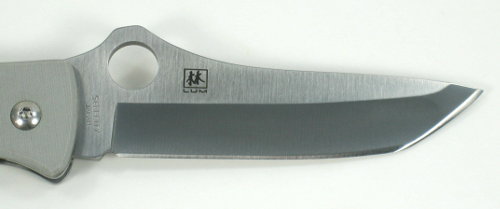
The Lum Tanto seems to really capture the essence of this blade shape. Beautiful knife.
The Cold Steel Recon 1 is another example. This is a little less stylized then the Lum Tanto, and a better example of what to typically expect:
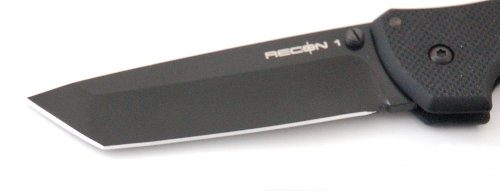
In fact, some sources say Cold Steel popularized this blade shape. That wouldn’t surprise me given their martial arts focus and because their catalog is heavy with tanto blades. Rumor has it blueprints for the original tanto design are contained in Lynn Thompson’s will, to be held in trust for exactly 100 years after his passing until it is to be unleashed onto the world not unlike the second coming of Christ.
What is a Tanto Blade Used For?
Just like the original tantō short swords, modern tanto blades have strong tips, which makes them great for piercing cuts. This is where the knife truly excels: stabbing. That strong piercing tip is excellent for penetrating and piercing.
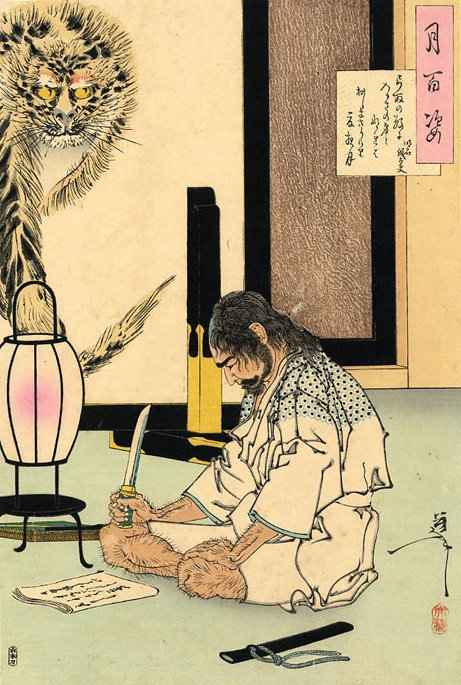
In ancient times a tantō was used for ritual Seppuku.
For this reason tanto blades are found in a lot of tactical knives. They look cool and fit the tactical knife theme, but they could also be used in a martial arts or self defense capacity.
You also find tanto blades in many Every Day Carry (EDC) knives. They look exotic and certainly can do daily carry tasks like open mail, assist in the preparation of food, and take care of odd tasks like cutting rope and other materials.
What are the Benefits of a Tanto Blade?
Tanto blades are great for stabbing things. That reinforced tip is tough to beat as far as durable penetrating power is concerned. If you use your knife to stab things primarily, then the tanto could be a great choice.
Tanto blades also have a secondary point (a “yokote”) that is good for draw cuts, clipping coupons, and that sort of thing. They are great for cutting thin objects like paper against flat surfaces. They can be used to remove stickers and trim tape.
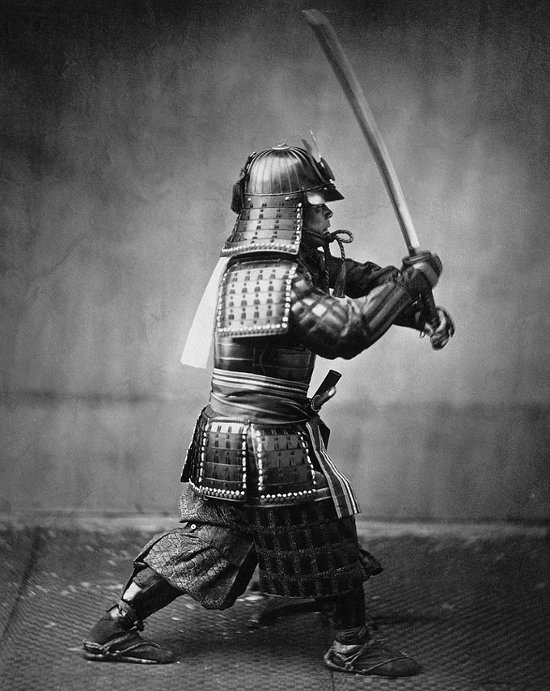
Gratuitous Samurai Photo
You can also use a tanto blade as a quasi chisel. It can be potentially good for certain types of carving and scraping. I don’t use my knives that way, and generally would suggest buying a chisel if you need a chisel, but some people like the versatility.
What are the Disadvantages to a Tanto Blade?
While tanto knives are great for stabbing, they don’t have a curved belly like a drop point or clip point blade, or if they do have a belly, it’s only a gentle one. For this reason they won’t be as good for certain tasks that utilize the belly of a knife. For example, a tanto is not going to be a good knife for skinning game. The lack of belly means it’s going to be almost impossible to follow the contours of an animal as you skin its hide.
The lack of belly can also be frustrating for food preparation. You won’t be able to “rock” the knife back and forth like a chef’s knife, which is going to make chopping much harder to do. It can also be difficult to do things like make crunching cuts through rope. For these reasons I don’t tend to buy many tantos. For what I do with a daily carry knife, I like to have some belly.
Some people love the look and the penetrating power of a tanto bladed knife, or the ability to use them to scrape and chisel, but personally I like a knife with some belly. That’s just me, and there is plenty of room for multiple perspectives.
Are Tanto Blades Hard to Sharpen?
The answer is “sort of”. There are a couple things about tanto blades that can make them more challenging to sharpen.
First of all, while the straight edge of an American tanto may seem easy enough to sharpen, it can be quite difficult to sharpen a straight edge properly. The angle and pressure must be uniform throughout the entire stroke to keep a consistent and straight edge. That said, if you are decent at sharpening you should be able to sharpen a tanto as well. It’s just a little different and may take some practice.
The second reason why tanto blades can be more difficult to sharpen is that you have 2 edges to sharpen. The main edge, and then from the secondary point to the tip. Depending on your method of sharpening it can be awkward to sharpen this small secondary edge. Again, not an impossible task, but that’s what it takes to fully sharpen one of these knives.
What is a Reverse Tanto Blade?
The reverse tanto is a blade shape popularized by Warren Osborn and his iconic Benchmade 940.
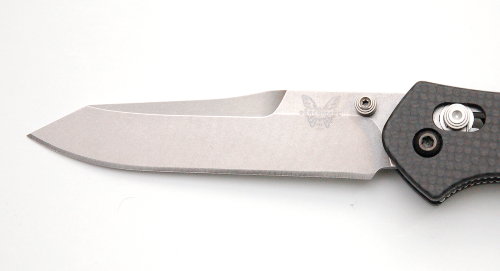
Essentially, this is an American Tanto flipped on its head, so the angled tanto tip is on the top side (the spine) of the knife. The edge is a traditional curved edge with some belly. It looks unique, may offer a stronger tip than a drop point, but still gives you some belly.
The 940 and the upgraded 940-1 are both beautiful knives.
Tanto Blades – Final Thoughts
Well, that’s my primer on tanto blades. I hope you found it interesting. If you have a question about tantos, then please feel fee to leave it in the comments section and I’ll flesh out the article further.
To close things out, tanto blades are a mix of old and new. They look cool, are highly functional, and can be potentially a good choice for a daily carry or tactical knife depending on your needs and preferences.
I will say that part of the joy in collecting knives is the variety of designs. I think if you like the look of a tanto knife, then buy one. Use it and enjoy it. I’ve owned a few over the years and they do make things interesting. That’s part of the fun in the hobby of knife collecting.
Fucking great read and incredibly informative. By far the best summarization of the tanto I’ve read so far and although my word might not mean a lot digitally trust in me when i say I have read quite the lot of summaries and to not sound too redundant “this is by far the best summarization I’ve read so far”.
Knife is shorter than a KBar, lacks multiple functions of defense and camp cooking.
Very informative! Thanks 👍🇺🇸
I agree with you on the tanto blade design. I do home remodeling and repairs for a living and I carry a knife everyday and I actually use it, hard. If you need a knife that can do slicing really well then a tanto blade is worthless. There is no curve and a curve is needed for good slicing power on a pocket knife.
I do really like the way they look I think they look very cool. Other than as a stabbing instrument and maybe a couple of other specialized things that is about all they are good for.
My EDC is a DeWalt pocket knife and it actually started out as a Tanto blade. I kept sharpening it as if it was a regular blade and eventually it became a regular blade. If you looked at my DeWalt knife right now you would just see a drop point blade.
I’ve got the blade really slicked up at the pivot point so it opens with a slight flick of your thumb. It’s lightweight and very easy to sharpen.
There are two pieces of metal that stick out at the top to guard your hand from slipping forward onto the blade. I took a dremel and cut one of them off so that when I flip my thumb forward it does not hit that piece of metal. This made it much better for flipping open. It still has one on the other side so it would not work for a left-handed user. If you saw the knife you would not know that I did this work on it because it looks factory.
Great reviews, James I’ve got to defend the ol’ tanto. My k-bars’ utility uses as well at a campfire are always great. The tanto style’s “angles” are the key to its last ditch self defense or first choice offensive blade. While the lack of belly doesn’t help with cleaning it will slip into the spots you want without Damaging unwanted areas. I believe the over rated tip of the kbar, when it comes to a self defense blade, makes the “tanto” the choice for me. The acute angle of the kbar will stick when striking bone, whereas the 45ish degree of the tanto tends to separate or splinter if don’t sharpen your leading edge.
Thank you to Osborn for the 940. Great take from the old school and it looks mean!! Thanks for the read guys.
Why is it a “Reverse Tanto” and not inverted or upside down? Why is there not a sharpened tip and secondary edge like a Westernized/American Tanto? Why was this not even a blade shape until 2000 when the 940 was released? Even though the Kiritsuke or K-tip already existed? Why did Benchmade capitalize on the success Cold Steel had with the Westernized/American Tanto shape with a marketing term instead of a the correct already existing shape? Why cannot one find the “Reverse Tanto” shape on any blade shape poster or mat prior to 2000? If it were truly reversed, the tip and tang would change positions. It is illogical. Prove me wrong, or double down on illogical reasoning.